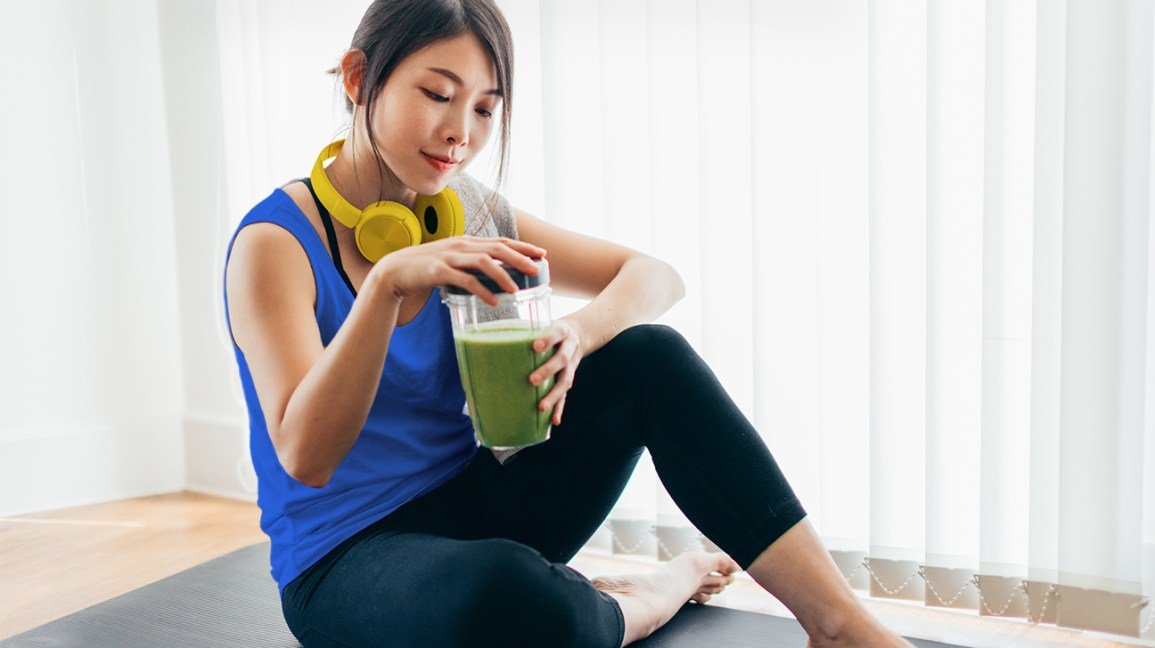What to Eat Before and After a Workout: 8 Healthy Snacking Tips

What to Eat Before and After a Workout: 8 Healthy Snacking Tips
Healthy snacking is an important part of anyone’s diet. But for athletes and active individuals, snacking ensures adequate fuel for exercise, improves muscle recovery, boosts mental performance, and helps maintain healthy body composition.
As a sports dietitian, athletes often ask me: What should I eat before and after a workout? What’s a good sports snack? These are great questions I’ll be happy to answer.
Healthy Snacking During Pre-Workout and Post-Workout
Snacks are “mini-meals” between our main meals and are necessary to get the calories and nutrients our bodies need. The number and type of snacks should be determined by your hunger signals, as well as your work, academic, athletic, or sleep schedules.
The key is to make smart snack choices to keep you on track with your nutrition and performance goals. Here are my top tips on healthy snacking:
1. Combine Lean Protein with a Carbohydrate and/or Healthy Fat.
In general, think of balance when looking for snacks to curb hunger. Pair protein-rich foods with a carbohydrate or healthy fat for a balanced snack. It is crucial to have lean protein at every meal and snack to support muscle growth and repair. Protein also promotes fullness, helping ward off hunger until your next meal.
Carbohydrates provide both your body and your brain with energy. Choose whole grains like whole-wheat bread or crackers or a high-fiber cereal, for long-lasting energy. Healthy fats, like nut butter or avocados, also provide energy with staying power.
Examples of balanced snacks include Greek yogurt with granola, half a turkey sandwich, a fruit smoothie made with Greek yogurt, a banana with peanut butter, string cheese and fruit, and trail mix.
2. Don’t Ignore Your Hunger Cues.Listen to your body and pay attention to your hunger cues. Common signals include stomach rumbling or growling, fatigue, shakiness or dizziness, and poor concentration.
If you have these symptoms, too many hours have passed without fuel. Being able to recognise these signals is crucial for athletic performance. You’ll need energy to perform your best.
Typically, spacing meals and snacks out every 2-3 hours is adequate timing to avoid hunger pangs and to ensure your body has enough fuel. This amounts to 2-3 snacks in addition to three main meals per day.
3. Fuel Your Exercise with Pre-Workout Snacks.
Carbohydrates are the preferred source of fuel for exercising muscles. Timing is important: prioritise easy-to-digest carbs in your pre-workout snack.
A small amount of lean protein is okay, but limit or avoid fats, as they may cause digestive issues if eaten too close to the time of your workout. Timing will vary, but eating your snack one-hour pre-workout should allow enough time for digestion.
Examples of pre-workout snacks include a fruit smoothie or applesauce, a handful of dried fruit plus whole-grain cereal, Greek yogurt with berries, a piece of fruit plus a carbohydrate-electrolyte beverage, and a piece of whole-grain toast with jam.
4. Refuel, Repair, and Recover with Post-Workout Snacks.
A good post-workout snack should have three components: protein, carbohydrates, and fluids. The goal after exercise is to replace the fuel that was burned, restore fluids lost through sweat, and provide protein to promote muscle repair.
Aim for at least 20 grams of protein in your snack to prevent muscle breakdown and to promote muscle building. Eating your snack within the first hour after exercise is ideal for replenishment and rebuilding.
Examples of good recovery snacks include low-fat chocolate milk, a protein shake, a fruit and Greek yogurt smoothie, trail mix with dried fruit, whole grain bread with nut butter, and banana plus low-fat milk.
5. Snack Mindfully and Avoid Distractions.
Munching mindlessly is an easy way to end up with your hand at the bottom of an empty bag of chips without knowing how it got there.
First, make sure you chose a healthy snack that aligns with your performance and health goals. Then, stop what you’re doing for a few minutes – turn off the TV, put down your phone, and close your laptop – and eat your snack.
Eating without distractions will help you feel more satisfied and you’ll be less likely to overeat.
6. Don’t Get Tricked by Treats.
Distinguish a healthy snack from a treat. Healthy snacks are nutritious and satisfy hunger. Treats, such as sweets, fried foods, and chips lack useful nutrients and provide “empty” calories,” meaning they cannot help your body grow, recover or perform to the best of your ability.
Treats might satisfy a craving, but they rarely satisfy hunger, leaving you to reach for something else soon after. Treats often lead to overeating, which could eventually lead to weight gain. Instead, choose a healthy snack that can satisfy your craving while making you feel full.
7. Choose Healthy, Convenient Snacks to Fill Nutrition Gaps.
Whether you’re fuelling for exercise, replenishing energy losses, or building and repairing muscles, your body needs constant nutrition. In my experience, many athletes are consistently hungry and can’t seem to get enough calories throughout the day.
When you’re on-the-go, choose a convenient snack such as a protein bar, fruit, or Greek yogurt. Snacking is a great way for active people to get the extra nutrition they need to achieve body composition and performance goals.
8. Plan Ahead.
Prepare healthy snacks at home to take with you to work, school, or training. Skip the vending machine and avoid buying snacks where healthy options are limited.
You’ll not only save money, but you’ll also get a bigger bang for your nutritional buck by preparing healthy snacks ahead of time. Pack portable snacks in your backpack or sports bag.
Planning ahead and knowing your schedule will keep you from missing your healthy snacks.
